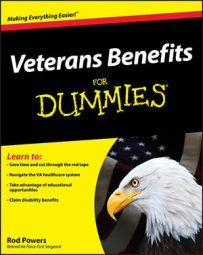Military funeral honors for veterans are provided by the Department of Defense. Military services have a long tradition of providing funeral honors for fallen veterans of their branches. However, during the military drawdowns of the late ’80s and ’90s, as resources began to stretch, the DOD found this harder and harder to do.
That’s when various veteran organizations, such as the Veterans of Foreign Wars (VFW) and the American Legion, stepped in to pick up the slack. These organizations volunteered to conduct funeral honors for fallen deceased veterans when the DOD was forced to decline due to lack of manpower and resources.
Many members of Congress thought this was atrocious (even though the congressionally mandated downsizing of the military caused the problem in the first place). In 1999, Congress passed a law requiring the military services to provide funeral honors for eligible veterans.
Under the law, the DOD must provide, upon request, an honor guard consisting of at least two military members to provide funeral honors for fallen eligible veterans.
The law requires that at least one member of the detail be a representative of the parent armed service of the deceased veteran. The honor detail must, at a minimum, perform a ceremony that includes the folding and presenting of the American flag to the next of kin and the playing of taps.
The honor guards who provide military honors for veterans
Almost every military installation has an honor guard team. Members of the honor guard are trained in military drill and ceremonies, and provide memorial honors, upon request, at the funerals of eligible veterans.
It may surprise you to know that military honor guard teams are comprised almost exclusively of volunteers who practice, drill, and perform funeral honors in their off-duty time. Although the military pays for their honor guard uniforms, equipment, and transportation expenses, most of these dedicated individuals also have other full-time military jobs.
Each of the services have one or two full-time honor guard units. These are the teams you often see on TV at major ceremonial events or in front of the White House to welcome distinguished visitors. They also often perform funeral honors for deceased U.S. presidents and other high-ranking officials. However, most military funeral honors are performed by individual honor guard teams stationed at most military bases.
The law requires the DOD to provide a minimum of two honor guard members to conduct honors at a veteran’s funeral. However, usually a funeral detail consists of between four and seven members. Much depends on the capabilities of the local honor guard unit, available resources, and manpower. Other factors, such as if there are other veteran funerals occurring in the area at the same time, may also affect availability.
What military honors are provided to veterans?
The law requires the DOD to play taps, fold the U.S. flag, and present the flag to the next of kin. However, other honors, such as honor guard pallbearers and a rifle volley, may be offered, depending on the resources available to the honor guard unit and desires of the family. Here are the specifics of what’s involved:
Taps: Taps is the customary bugle call played at military funerals. The law requires taps to be played by a bugler, if available, but very few buglers are in the military these days, so it’s usually played by electronic means. During the playing of taps, the honor guard presents a final salute to the deceased veteran.
Flag folding: The U.S. flag is carefully removed from the coffin and solemnly folded by members of the honor guard team. When completely folded, the flag forms a triangle, which is representative of the tri-cornered hats worn by colonial soldiers during the Revolutionary War.
The procedure involves 13 folds, representing the original colonies. When all the folds have been made, no red or white stripes are visible, leaving only the honor field of blue and stars.
Flag presentation: The folded flag is given to an honor guard member who is in the same military branch as the deceased veteran.
The service representative marches slowly to the next of kin and presents the flag with the words, “As a representative of the United States Army (Air Force/Navy/Marine Corps/Coast Guard), it is my high privilege to present you this flag. Let it be a symbol of the grateful appreciation this nation feels for the distinguished service rendered to our country and our flag by your loved one.”
If there is no next of kin, the flag may be presented to a friend of the deceased.
Pallbearers: If manpower is available, family members can request that members of the honor guard act as pallbearers, in addition to providing other funeral honors.
Rifle volley: At military funerals, you often see three volleys of shots fired in honor of the deceased veteran. This tradition is performed by honor guard teams, based on family desires and available resources.
The rifle volley is often mistaken by nonmilitary folks as a 21-gun salute, although it’s entirely different. In the military, a gun is a large-caliber weapon. The three volleys are fired from rifles, not guns. Therefore, the three volleys aren’t any kind of gun salute at all.
The firing team can consist of any number, but it’s usually made up of seven or eight members. Whether the team consists of three, eight, or ten, each member fires three times (three volleys).
The three volleys come from an old battlefield custom. The warring sides would cease hostilities to clear their dead from the battlefield, and the firing of three volleys meant that the dead had been properly cared for and the side was ready to resume the battle.
The honor guard often slips three shell-casings into the folded flag before presenting the flag to the family. Each casing represents one volley.

